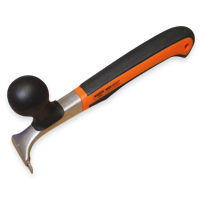I have used this company before, I get my linseed oil paint from them. I'm sorry that the photos will not copy.
Customer Service
Call 1.866.516.7787 toll free. Order online or by phone.
Sans frais – on parle Francais
info@swedepaint.ca
Scrapers
Quick Links (to Scraper Products below):
Stainless Steel:
2 1/2" Stainless Steel Blade Scraper
Hardened Swedish Steel:
Triangular Scraper (Full Size)
Contractors' Triangular Scraper Kit
Oval Scraper
Compact Triangular Scraper
Profiled Scraper
Boomerang Scraper
Clapboard Scraper
NEW Big Dawg
NEW Window Scraper
NEW German Siding Scraper
Tungsten Carbide:
2" Two-Handed Scraper with Reversible Blade
2" Flat Scraper
1 1/4" Scraper
1/2" Flat Scraper
1/2" Fluted Column Scraper
1 1/4" German Siding Scraper
1" Crown Molding Scraper
2" Scraper with Vacuum Attachment
NEW 1 1/4" Cove Scraper
Falun Red Paint
Genuine Pine Tar
Painting Accessories
Scrapers
Scraper Blades
Scraper Kits
Other Accessories
The Silent Paint Remover™
What makes a good scraper?
One important factor is how the blade is attached to the handle. If the blade is moving just slightly, this will make the scraper significantly less effective. You need a scraper with a blade that does not flex. Our scrapers have blades that are attached with a strong bolt on top of a flat washer and a split washer preventing the blade from flexing.
This thickness of the blade is also important. A thicker blade will reduce the flex and transfer the power directly to the sharp edge, making it much more effective. Our scraper blades are at least twice the thickness of most other brands on the market.
A long handle means better leverage. Extra long handle will increase the power, you can apply onto the painted or varnished surface. These scrapers have 12� long handle allowing great leverage for scraping.
The angle of the sharp edge is also important. You may have noticed if you have ever used a chisel, that it was very sharp when it was brand new but after it was sharpened it became significantly less effective. This problem appears when you sharpen a scraper as well. If you change the angle of the edge during sharpening, you will loose some of the scrapers effectiveness. You must maintain the same angle. Because our scraper blades are so much thicker it is easier to maintain the correct angle. A sharpening guide or blade sharpening jig of some sort can be very helpful to keep the correct angle.
A sharp blade is also very important. Allowing the scraper to get very dull will result in great effort to bring the sharpness back. It is simply much easier to sharpen a blade that is slightly dull than extremely dull. Sharpen your scraper regularly.
How do you use these scrapers?
You need both hands with this hand tool. Position the scraper handle parallel to the painted surface or closer. Grip one hand on the rear of the scraper handle and apply pressure with your other hand close to the blade. Holding the scraper with only one hand is not as effective.


